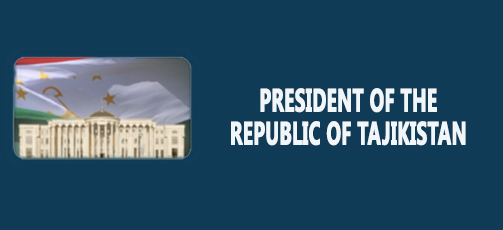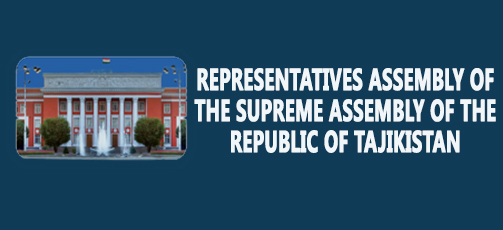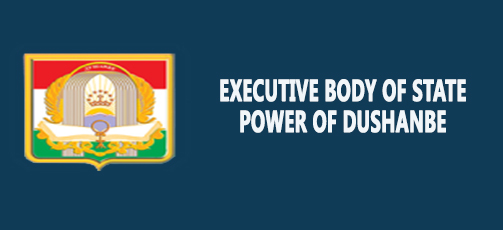President Emomali Rahmon Met with Representative of Tajik Diaspora in St. Petersburg
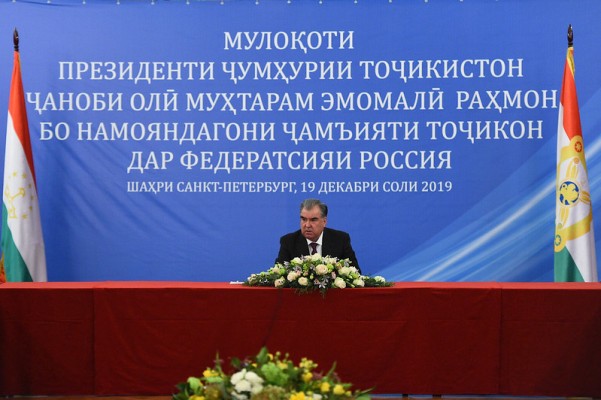
DUSHANBE, 20.12.2019 (NIAT Khovar) – The Founder of Peace and National Unity, Leader of the Nation, President of Tajikistan Emomali Rahmon met with representative of Tajik diaspora on the sideline of an informal meeting of CIS heads of states in St. Petersburg. The event was attended by a dozen representatives of various civic organizations, including students studying in Russia and labor migrants.
The aim of the meeting focused on the education of Tajik students and the situation of labor migrants in Russia. President Emomali Rahmon and his Russian counterpart had discussed these issues during his officials visit to Moscow on April 16 this year. Currently, Tajik cultural societies operate in over 70 regions of Russia.
The National Development Strategy up to 2030 (NDS-2030), the commissioning of the second hydro unit of the Rogun HPP, ensuring sustainable economic development and the realization of strategic tasks of the state — ensuring energy independence, food security, exiting the communication deadlock and the rapid industrialization of the country were highlighted by the Tajik president.
In the anticipation of the 30th anniversary of the independence dozens of new educational institutions, hospitals, clinics and health centers will be constructed and put into operation.
President Emomali Rahmon emphasized that in the upcoming years a number of important events have been planned, including the election of a new convocation of the Supreme Assembly and the Assembly of the People’s Deputies.
Speaking about the current status of strategic partnerships with Russia, President Emomali Rahmon emphasized that regulating the process of labor migration remains one of the most important issues between the top leadership of both Russia and Tajikistan.
The government has been paying serious attention to various aspects of this issue, in particular the protection of the rights and interests of Tajik citizens working abroad.
In April, an agreement on the attraction of labor migrants to Russia was signed by both countries.
President Emomali Rahmon instructed the Embassy of Tajikistan in Moscow concerning the next stage of amnesty for Tajik labor migrant that was also touched upon during the meeting between both presidents.
Currently, Tajikistan has established comprehensive cooperation with 83 subjects of Russia in various trade and economic sectors, including in the field of labor migration, as well as in the cultural and humanitarian field.
Dozens of representatives of our country have been educated in the leading educational institutions of this country and are making their worthy contribution to the socio-economic, technical and cultural development of Tajikistan.
The total number of Tajik students in higher education institutions in the Northwestern Federal District has reached 3,000, and more are continuing their education in St. Petersburg.
In connection with the rapidly changing situation in the world, the existence of threats to the country’s security and in the attempt to ensure the protection of our compatriots living abroad from the influence and propaganda of radical and terrorist organizations and movements, President Emomali Rahmon urged the leaders of Tajik societies and associations to use all available means to expose these organizations and movements’ true goals and to make effort to prevent Tajik citizens from joining these criminal groups.
In connection with the preservation of historical monuments and national values, including national language and culture, traditions and customs, President Emomali Rahmon noted the necessity of adding Shashmakom (musical genre), Navruz and Chakan embroidery to the UNESCO World Cultural Heritage List.
Kamol Khujandi’s 700th anniversary and the 5,500th anniversary of the ancient city of Sarazm were recently included in the UNESCO World Heritage List.
Tajik societies and associations in Russia were called upon to contribute to the upbringing of the younger generation in the spirit of national identity, respect for traditions and culture of their ancestors, taking a more active part in celebrating national and cultural holidays, such as Navruz, Sada and Mehrgon.
Another suggestion was the promotion of Tajik culture, civilization and preservation of Tajik identity through the establishment of magazines, newspapers, TV and radio in the territory of Russia. 










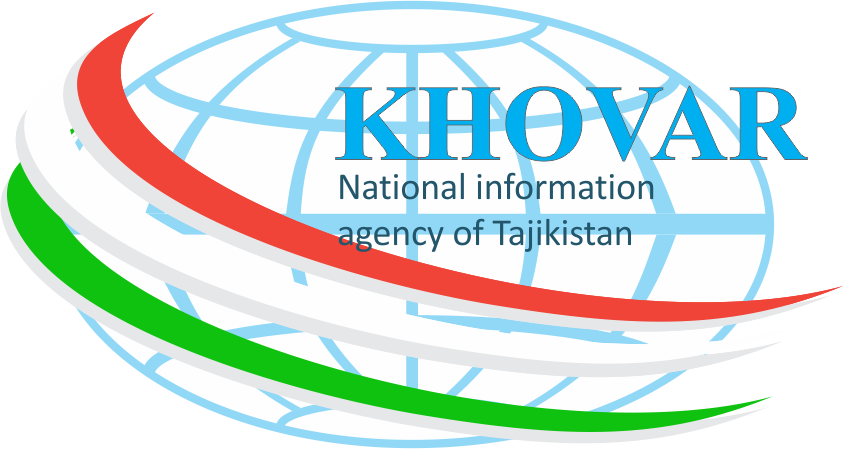
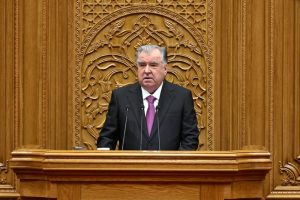 Delivery of the Address of the President of the Republic of Tajikistan on the Main Directions of the Domestic and Foreign Policy of the country
Delivery of the Address of the President of the Republic of Tajikistan on the Main Directions of the Domestic and Foreign Policy of the country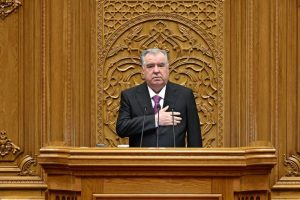 Address by the President of the Republic of Tajikistan His Excellency Emomali Rahmon, on the main directions of the domestic and foreign policy of the Republic of Tajikistan
Address by the President of the Republic of Tajikistan His Excellency Emomali Rahmon, on the main directions of the domestic and foreign policy of the Republic of Tajikistan President Emomali Rahmon attends International Forum on Peace and Trust in Ashgabat
President Emomali Rahmon attends International Forum on Peace and Trust in Ashgabat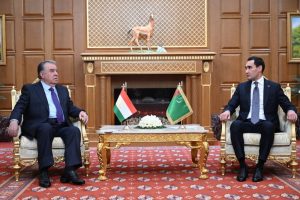 President of Tajikistan Emomali Rahmon reaffirms commitment to developing cooperation with Turkmenistan within strategic partnership
President of Tajikistan Emomali Rahmon reaffirms commitment to developing cooperation with Turkmenistan within strategic partnership President Emomali Rahmon arrives in Turkmenistan on a working visit
President Emomali Rahmon arrives in Turkmenistan on a working visit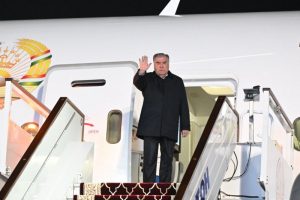 President Emomali Rahmon departs for Turkmenistan to attend Int’l Peace and Trust Forum
President Emomali Rahmon departs for Turkmenistan to attend Int’l Peace and Trust Forum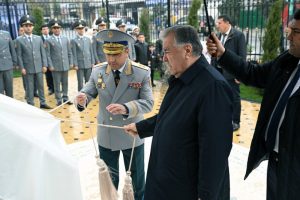 President Emomali Rahmon attended ceremony to commission the building of Regional Department of the State Financial Control and Anti-Corruption Agency
President Emomali Rahmon attended ceremony to commission the building of Regional Department of the State Financial Control and Anti-Corruption Agency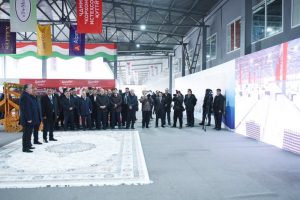 President Emomali Rahmon participated in opening of Tursunzoda Market in Tursunzoda
President Emomali Rahmon participated in opening of Tursunzoda Market in Tursunzoda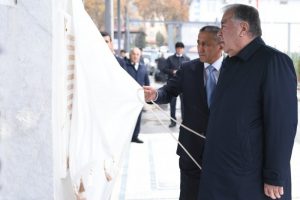 President Emomali Rahmon attends inauguration of the aluminum products plant in Tursunzoda
President Emomali Rahmon attends inauguration of the aluminum products plant in Tursunzoda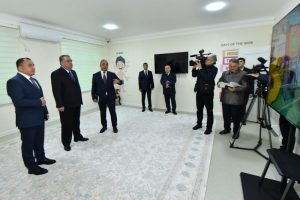 President Emomali Rahmon attended the inauguration of six private kindergartens in Tursunzoda
President Emomali Rahmon attended the inauguration of six private kindergartens in Tursunzoda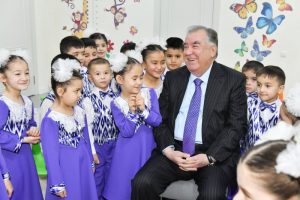 President Emomali Rahmon attended the opening of Ghunchahoi Istiqlol Kindgergarten in Tursunzoda
President Emomali Rahmon attended the opening of Ghunchahoi Istiqlol Kindgergarten in Tursunzoda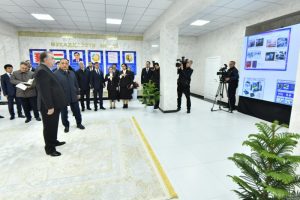 President Emomali Rahmon participated in opening of eight secondary educational institutions in Tursunzoda
President Emomali Rahmon participated in opening of eight secondary educational institutions in Tursunzoda









